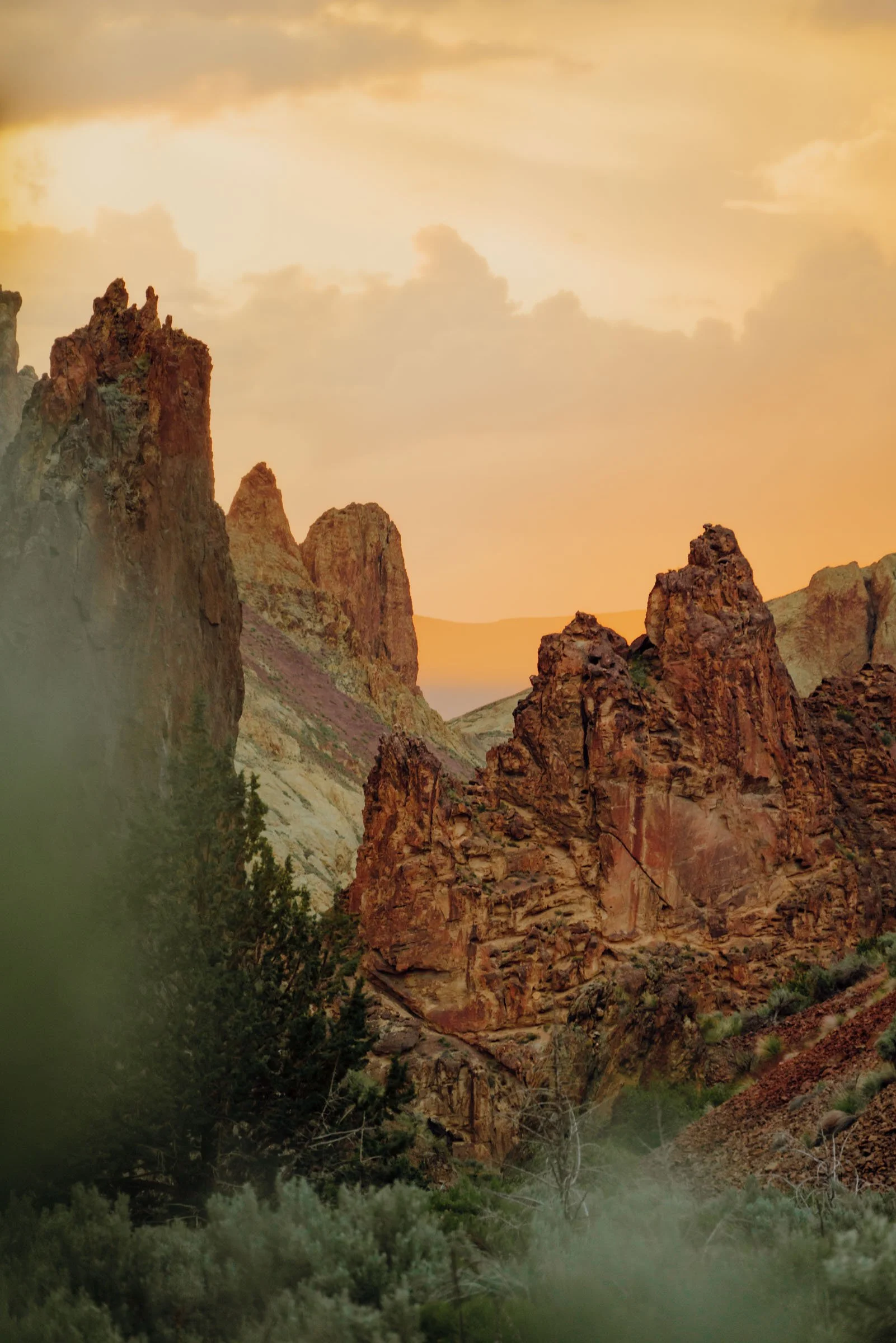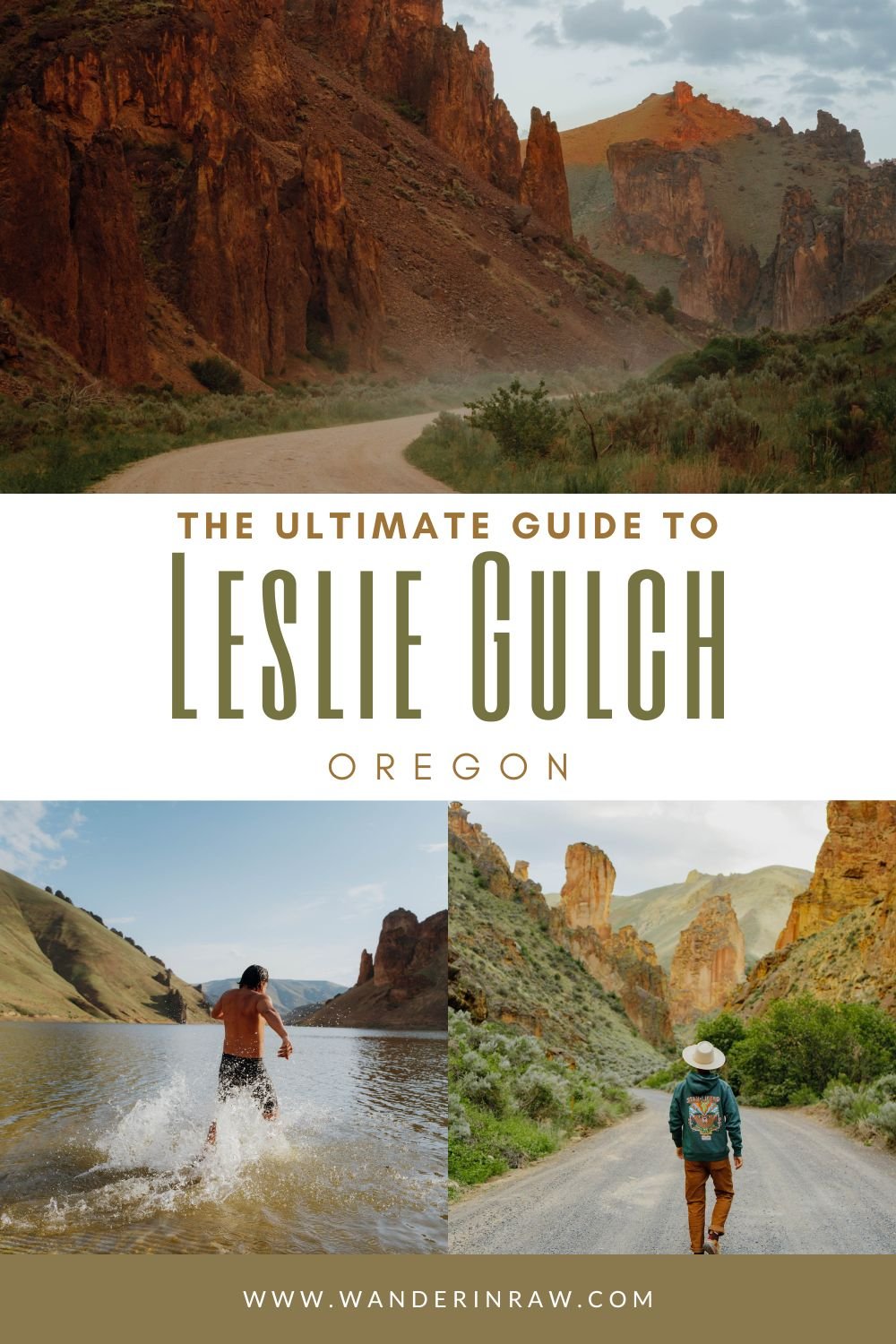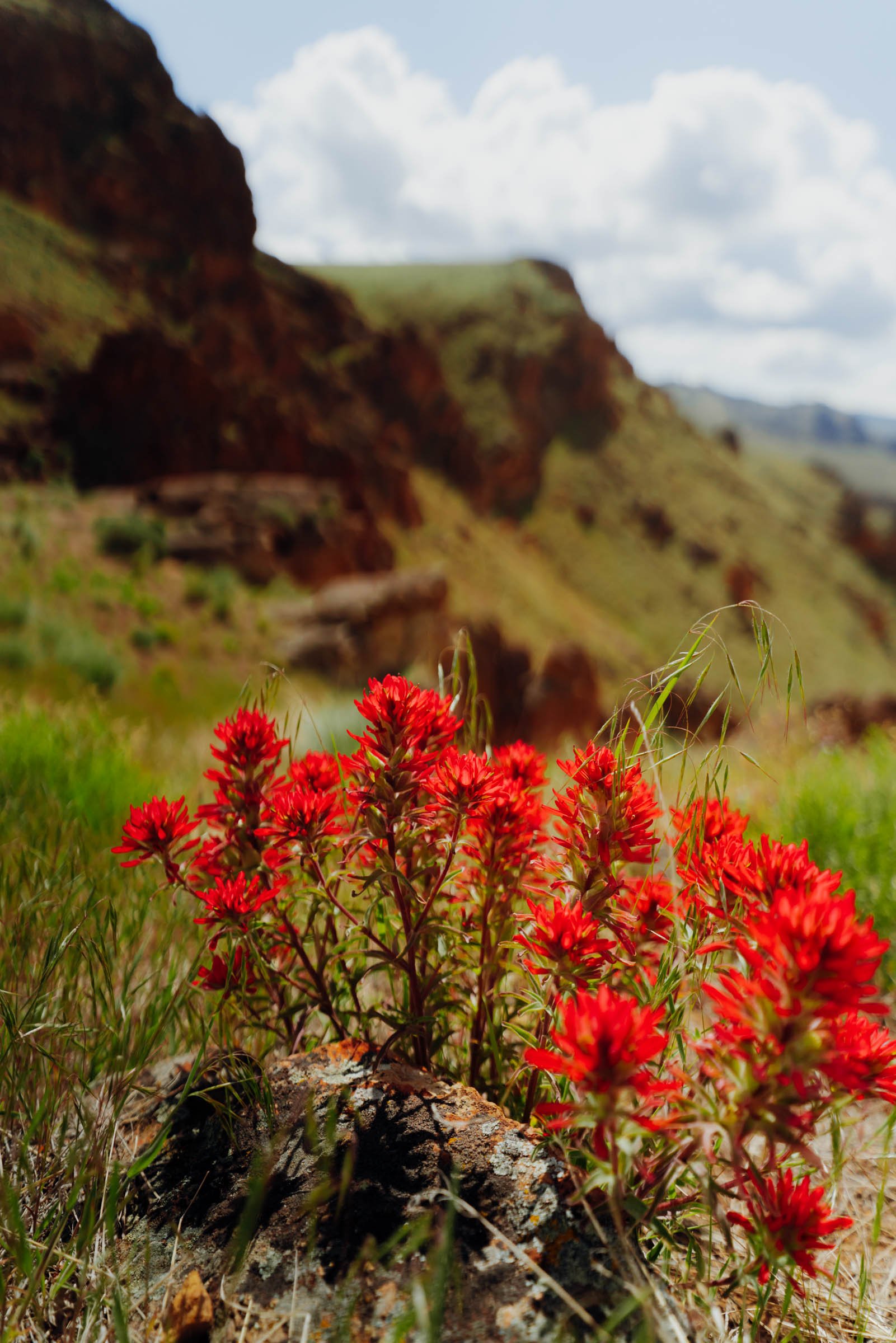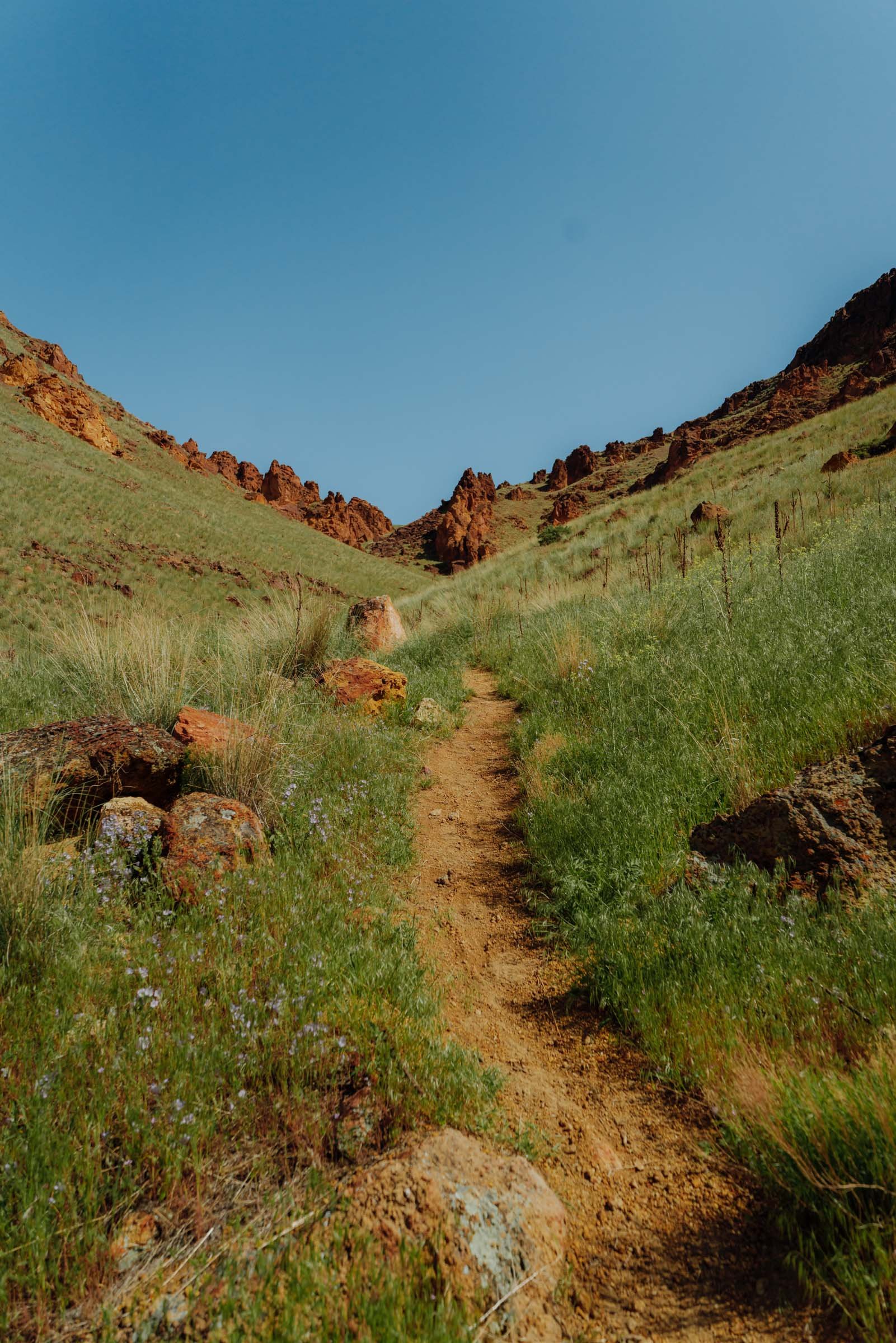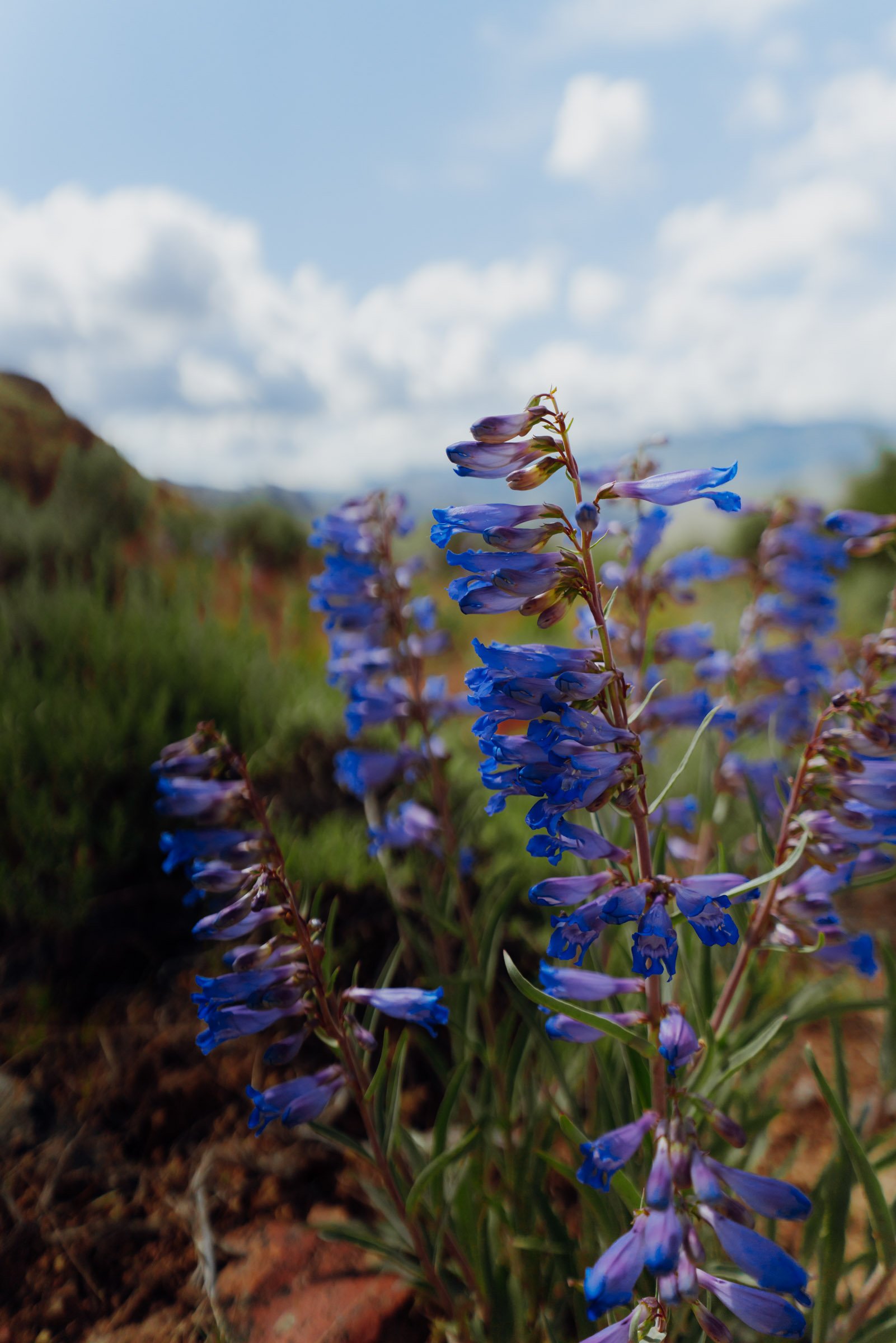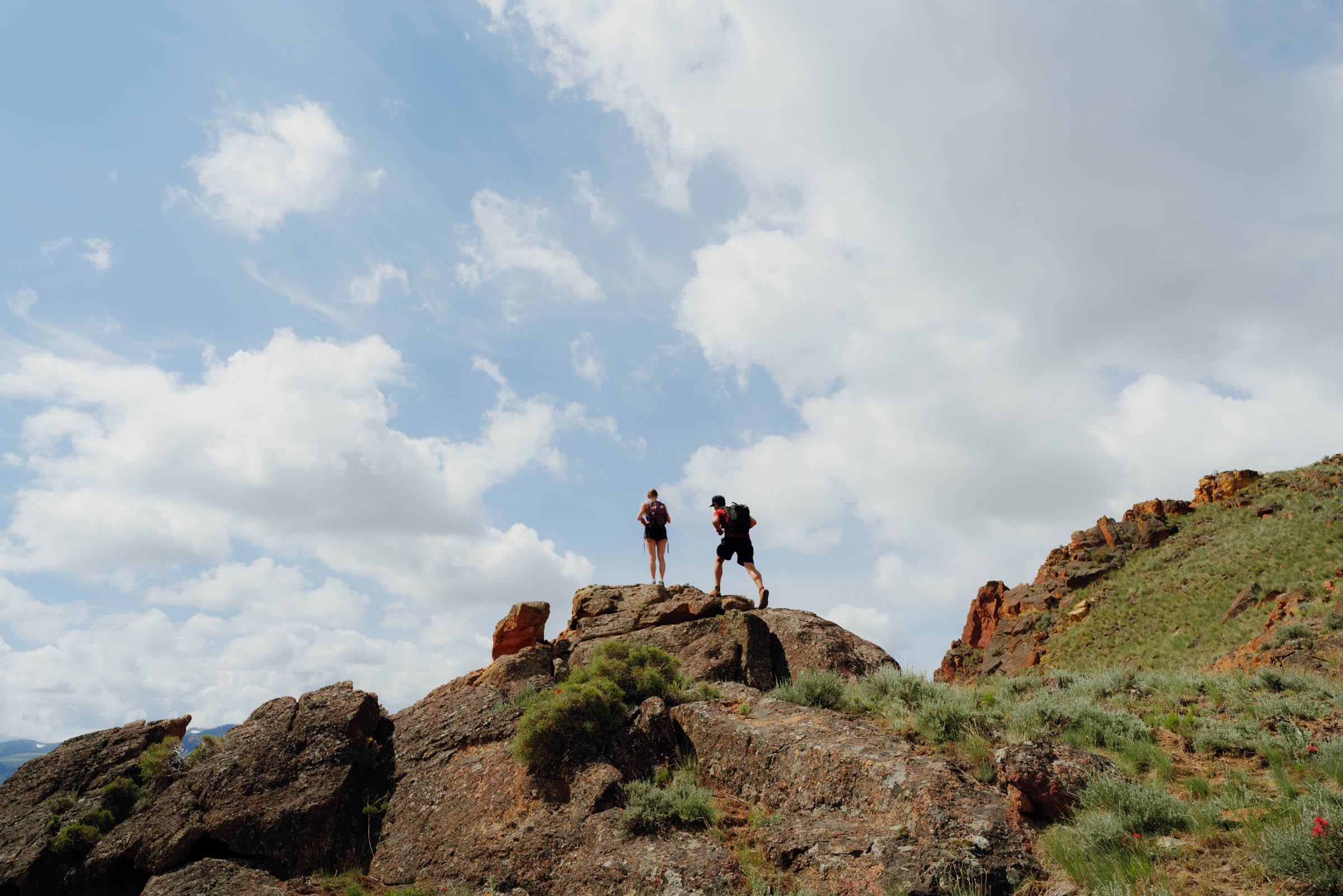The Ultimate Guide to Leslie Gulch in Oregon
There’s a little-known gem in eastern Oregon that blew my freaking mind: Cue Leslie Gulch. With towering rock formations, stunning red rock canyons, and a lake to swim, boat, and fish in, this spot has a little something for everyone and is the perfect place to go if you’re looking for utter silence. Don’t miss this stop on your next Oregon road trip!
Driving the Leslie Gulch Road.
While the roads may be rough and the hiking trails steep, every step in Leslie Gulch is worth it when you're rewarded with panoramic views of the rugged landscape. Whether you're a photographer, hiker, or just seeking solace in the great outdoors, don’t miss this Oregon gem. Here’s everything to know about visiting Leslie Gulch, including pro tips for snagging a campsite, a dispersed car camping packing list, the best hikes in the area, and so much more. Let’s get it.
Sunset at Leslie Gulch
Table of Contents
What is the history of Leslie Gulch?
Great question, I’m so glad you asked! Native Americans fished, hunted, and camped along the Owyhee River in Leslie Gulch 5,000 years before Europeans came to the area, and what makes this gulch so freaking cool is the crazy rock formations that are made of tuff or consolidated volcanic ash!
Driving the Leslie Gulch Road
About 15.5 million years ago a series of violent explosions from the Mahogany Mountain caldera (a large volcanic depression which encompasses Leslie Gulch) dumped a bunch of rhyolite ash back into the volcano as a gaseous deposit of fine ash and rock fragments up to 1,000 feet thick. Later, (about 100,000 years later to be somewhat exact) volcanic eruptions from the Three Fingers caldera deposited another layer of rhyolite tuff in Leslie Gulch. After years of erosion, the deposits now take the shape of steep slopes and vertical, honeycombed towers. It’s pretty freaking beautiful!
Sunset at Leslie Gulch
How did Leslie Gulch get it’s name?
It’s honestly a pretty funny story. In 1882, Hiram E. Leslie–a cattle rancher–was struck by lightning while working in what was then known as Dugout Gulch. Guess what happened next? Leslie became the talk of the town, obviously, and got the whole gulch named after him! The original Leslie Gulch Canyon Road used to be a wagon and mail route between Rockville and Watson. Today, the town of Watson is still around and lies at the bottom of the Owyhee Reservoir!
Some of the best views are right from the road!
Where is Leslie Gulch in Oregon?
Leslie Gulch is a geological wonderland nestled in the Owyhee Canyonlands of eastern Oregon.
If you’re coming from the north, you’ll first want to map to Marsing, Idaho. You’ll need to drive into Idaho before going back into Oregon, wild I know. From Marsing, find your way onto US-95 S. Drive for about 19 miles, turn right onto McBride Creek Rd. Keep left for a little under 9 miles. Take a right onto Succor Creek Rd and then another almost immediate right to stay on Succor Creek Rd. After 1.5 miles, take a left onto Leslie Gulch Rd. From here, it’s 14 miles to the river’s edge!
If you’re coming from the south, you’ll first want to map to Jordan Valley, Oregon. Drive north on US-95 N for about 18 miles before taking a left onto McBride Creek Rd. Keep left for a little under 9 miles. Take a right onto Succor Creek Rd and then another almost immediate right to stay on Succor Creek Rd. After 1.5 miles, take a left onto Leslie Gulch Rd. From here, it’s 14 miles to the river’s edge!
It's important to note that the road is unpaved. A 4WD vehicle with high clearance is recommended but not required. Along the way, the scenery is truly breathtaking with towering rock formations, sagebrush-covered plains, and the Owyhee River winding through the canyon. GORGEOUS.
Sunset at Leslie Gulch
When to Visit Leslie Gulch
I’d recommend visiting late spring and early fall, mainly to avoid the heat. It’s high desert out here and it can get HOT! Bonus, visiting in late spring means wildflowers, ayo!!!!
Avoid winter for sketchy ice and snow conditions and check the weather to avoid potential flash floods!
Leslie Gulch
Leslie Gulch is one of the largest unprotected areas in the United States.
This means implementing solid Leave No Trace practices is ESSENTIAL. Please read through every bullet point below and do your best to keep these areas clean and pristine, respecting the environment and each other, and making it a welcoming environment for everyone who visits after you.
Plan ahead and prepare accordingly
It’s always important to check the weather before going out on an adventure, but Leslie Gulch in particular is prone to flash floods, there is no drinking water available so bring what you need and/or a filter to filter more.
Travel and camp on durable surfaces
Leslie Gulch is home to areas of critical environmental concern and plenty of unique plants and animals call this area home. Camp only in the designated campsite (Slocum Creek Campground) and be mindful of where you step and pitch your tent.
Dispose of waste properly
Pack out all of your garbage with you. There is no garbage service out here.
Leave what you find
There’s a lot of really cool stuff to see unique to this area. Don’t take souvenirs!
Minimize Campfire Impacts
Make fires only in designated fire rings and stay up to date with burn bans in the area.
Respect Wildlife
Do not feed, touch, or taunt animals and be mindful of rattlesnakes. They love this area!
Be Considerate of Others
There’s no park ranger going to tell you to be quiet or respectful. Treat others how you’d like to be treated and contribute to the inclusive outdoor community we’d all love to enjoy!
Map courtesy of BLM.gov.
Safety First!
Leslie Gulch is out there. There’s no cell service, no drinking water, weather can roll in fast, it’s prone to flash floods, and can be icy and dangerous in the winter. I’d recommend only visiting during the summer months, and having a satellite communicator just in case. Treat it like a backpacking trip! Do your research and be prepared.
As far as satellite communicators go, a Garmin InReach or Zoleo are both great options!
Camping at Leslie Gulch
Camping in Leslie Gulch
Leslie Gulch is run by the Bureau of Land Management, which means camping is FREE! I know, I thought it was too good to be true too. Let’s do our part to respect the land and keep it that way!
Campers MUST camp in the Slocum Creek Campground at the end of Leslie Gulch Rd outside of the Area of Critical Environmental Concern (see map above for details)–you’ll need to drive all the way through the canyon to get there (and it dead ends, so you can’t get lost!).
Camping at Leslie Gulch
To the left, you’ll find 12 designated campsites with covered picnic tables and parking spots available on a first-come, first-served basis. This is also where you can find the first of two pit toilets. I recommend getting there right around 9 a.m. to snag a spot.
It was already full by the time we got there, so we continued just a few feet past it and found a nice open lot to the right that looked like it was meant for car campers. This area is also outside of the Area of Critical Environmental Concern and has plenty of open dirt for tents and cars that would cause minimal environmental impact, so we decided it’d be a safe spot to camp. Car campers and tenters greeted us upon our arrival–how nice!
We pulled up on the side of the lot to a nice spot with a fire pit, set up our tent, and walked down to the water. It was a HOT day and we were all in need of a little freshwater dip.
Leslie Gulch
Pro Tips for Dispersed Camping at Leslie Gulch
Bring plenty garbage bags! There is no garbage service and all trash must be packed out. Do not, I repeat, do not leave your trash in the pit toilets.
Pack plenty of water and a water filter. There is no fresh drinking water available. I like to bring the Grayl or a Sawyer Squeeze on all my trips so I don’t have to worry about water! With the lake right there, there’s plenty of filterable water just a short stroll away.
Juniper Trail at Leslie Gulch
Hiking in Leslie Gulch
There are plenty of hikes to keep you busy, and all have their own unique rock formations that’ll have you “oo-ing” and “ahh-ing” around every corner.
Juniper Trail at Leslie Gulch
Our plans got a little rained out with a thunderstorm that came through, but we still managed to check out Juniper Gulch when it cleared! It’s a 3.3-mile RT hike with about 1,000’ of elevation. It started out chill as we walked through carved sections of rock that took on a half-moon shape that kind of reminded me of the Subway in Zion and past honeycomb formations (a bunch of little holes in rocks). The last quarter mile was basically straight up and ended atop a ridge with crazy views on both sides. It made me feel so small.
The top of Juniper Trail at Leslie Gulch
Other hikes of note include Dago Gulch and Upper Leslie Gulch.
Swimming in the Owyhee Reservoir (Owyhee Lake)
Swimming in the Owyhee Reservoir
This is Oregon’s longest reservoir at 52 miles, filled by the Owyhee River which connects to the Snake River. Fisherpeople love this spot for its several species of fish, including crappie, rainbow trout, largemouth bass, smallmouth bass, yellow perch, and brown bullhead.
Owyhee Reservoir (Owyhee Lake)
We walked down to the boat launch to wash the day away with a quick swim. You’ll also find a little beach to the right, but it looked a little muddy, so we opted for the boat launch instead. Yield to boaters! You’ll definitely run into a few, especially if you’re there on a weekend.
Wildflowers at Leslie Gulch
Leslie Gulch’s Unique Flora + Fauna
There are a ton of sick species to keep an eye out for on your hikes!
You’ll find our typical PNW lupine, paintbrush, and arrowleaf balsamroot, but there are also some endemic species local to this gulch only! These include Etter’s groundsel and Packard’s blazing star.
Lupine and paintbrush on Juniper Trail in Leslie Gulch
This area is also home to the largest heard of California Bighorn sheep in the US (more than 200)! We didn’t get lucky enough to see them–I hope you do! Mule deer, California bighorn sheep, Rocky mountain elk, coyotes, and bobcats also call Leslie Gulch home.
More common are rattlesnakes–they love to come out at dawn and dusk. Keep an eye and ear out and consider wearing long pants to avoid any unwanted encounters!
Hiking the Juniper Trail in Leslie Gulch
Car Camping Packing List
Sleeping System + Lounging
Tent (if you don’t want to sleep in your car)
Sleeping bag or blanket. I usually sleep with my Rumpl blanket when I car camp!
Pillow
Lantern
Tools
Kitchen
Easy meals (e.g. pre-made burritos, dehydrated meals, jerky, bars, something sweet–love me some sourpatch watermelons and some type of chocolate… M&Ms if it’s going to be hot so they don’t melt–tuna packets and crackers, etc.)
Water
Camp stove/grill + Fuel
Coffee/tea/hot cocoa + coffee making gear. I nearly always bring Kuju Pour Over coffee to make my life easier.
Mugs. I bring my Hydroflask Insulated Cooler Cup with me on all car camping trips!
Knife + Cutting Board
Foil
Garbage bags
Clothing + Accessories
Baseball cap
Sports bra
Long sleeve moisture-wicking top
Insulating layer (I always bring my Stio puffer)
Waterproof layer. I love my REI Xero-Dry GTX raincoat.
Shorts. I usually bring a pair of biker shorts and hiking shorts. Been loving Stio’s Goodwin Shorts lately because they have a belt!
Leggings. Love my Gylders!
Hiking pants. I usually leave these at home unless I’m backpacking, but up to you, obvi!
Merino wool socks
Hiking boots. You won’t catch me without my Danner Mountain 600s.
Camp shoes. I usually bring my Teva slippers and sandals when I’m car camping.
Toiletries
Sunscreen. Body and face sunscreen and SPF chapstick all from Kinfield. They’re my fave.
Lotion. I use Kinfield’s Rescue Mask whenever I’m in dry climates.
Mosquito repellant. Kinfield again–I know, I’m obsessed.
Baby wipes
Toothbrush and toothpaste
Hand sanitizer
Deodorant
Extras
Camera + lenses + chargers + SD cards
Twinkle lights for vibes
Portable battery for car camping. LOVE my Geneverse.
Book
Games (Cribbage, frisbee, corn hole, etc.)
Journal

